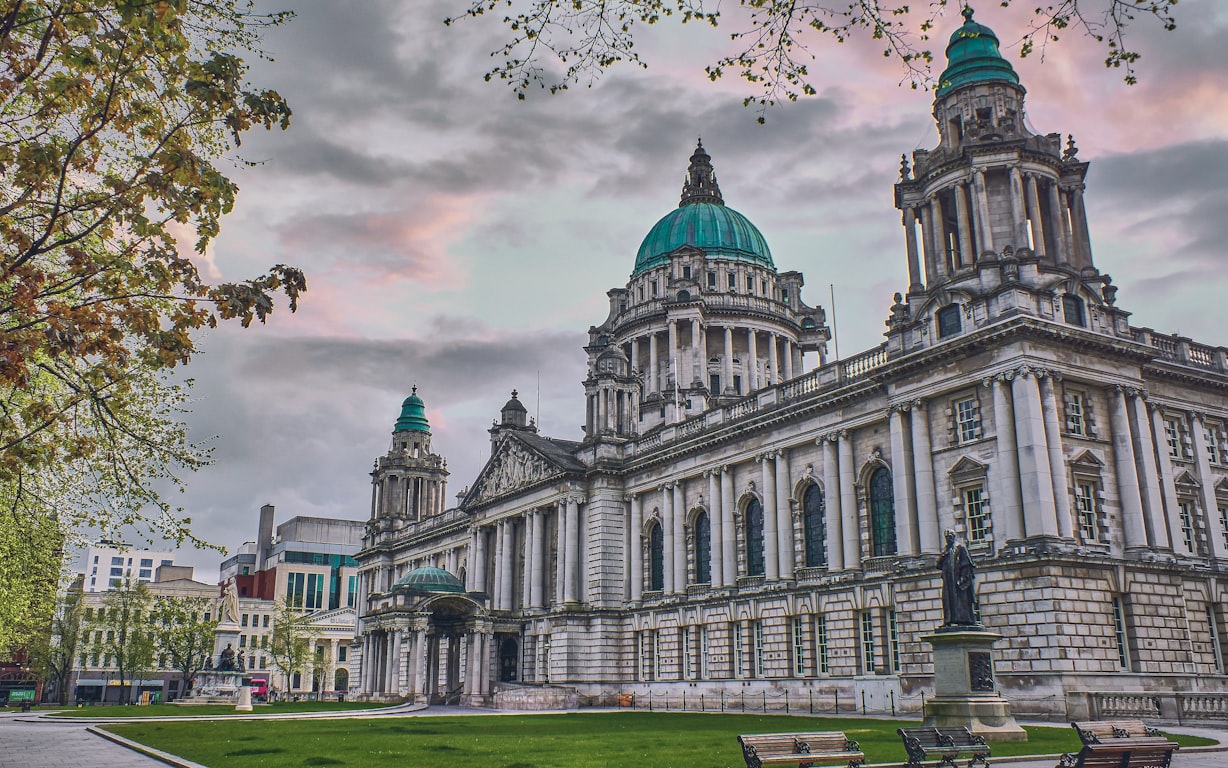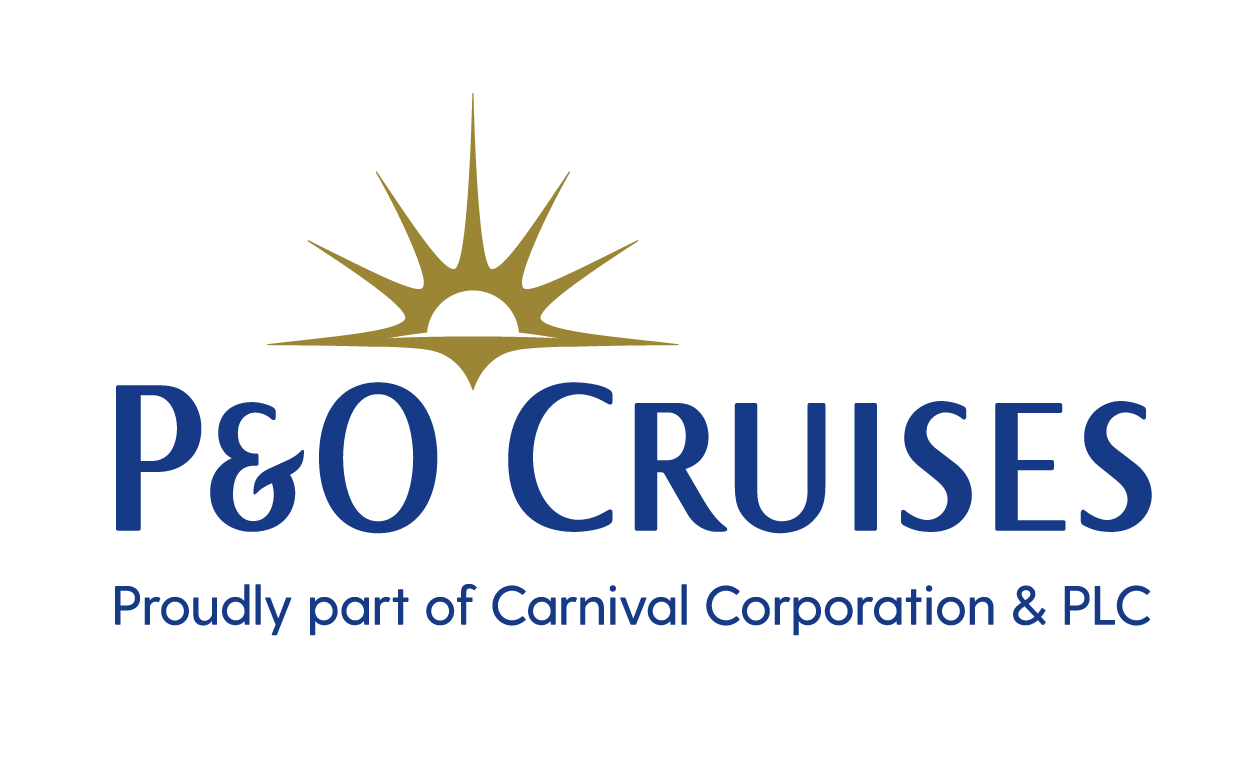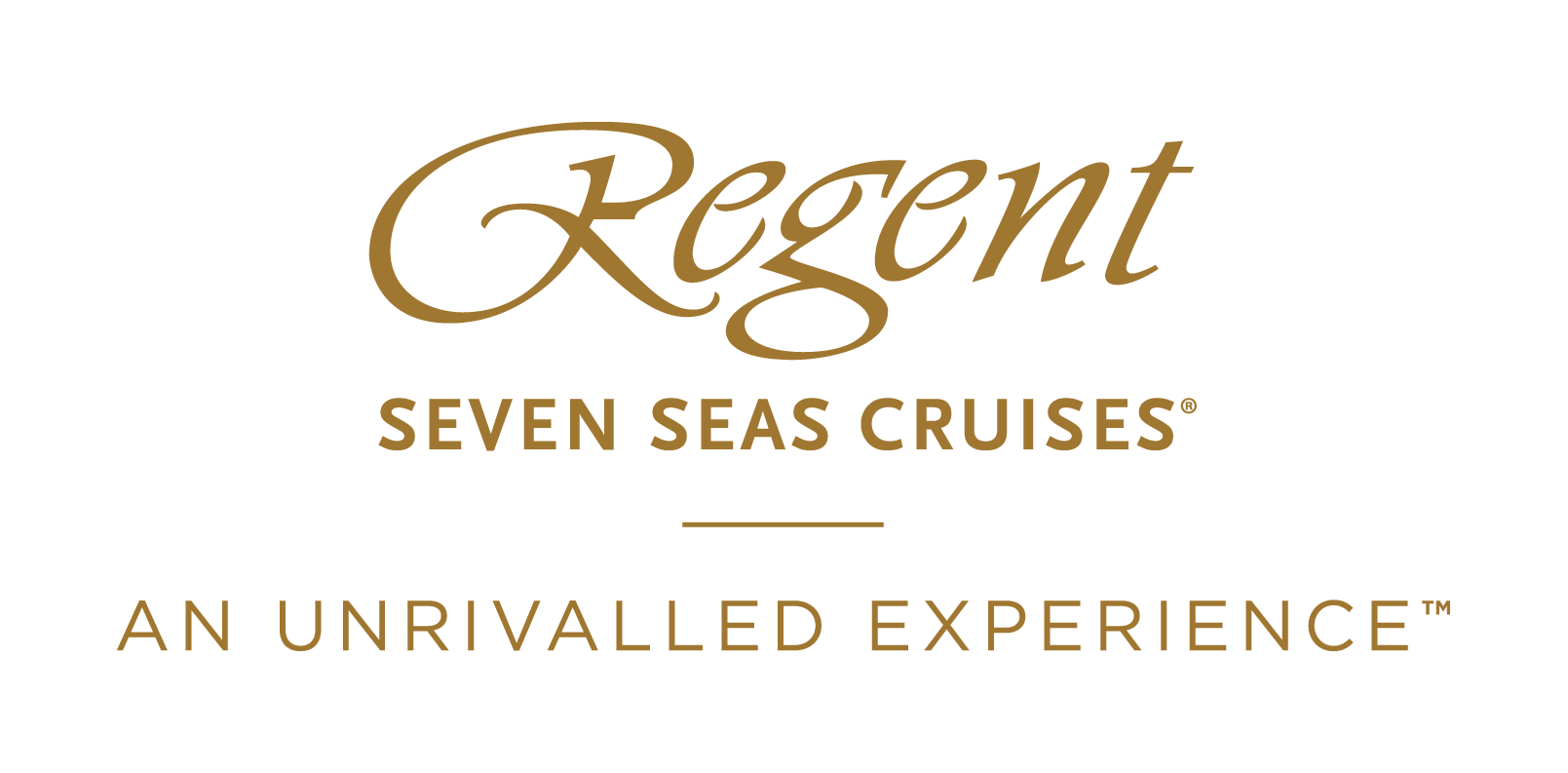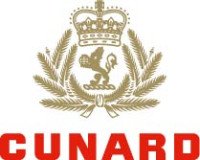Cruising From The UK
Cruise from the UK and enjoy the most relaxing cruise experience possible. Choose from a range of itineraries with many of the world's top cruise lines, giving you a convenient and exciting experience without the hassle or limitations of needing to fly to your starting destination. Whether you're planning ahead or booking last-minute, there is a cruise from the UK for everyone.
Many lines offer sailings from the UK, heading to a wealth of destinations for both short breaks and longer holidays. Most of the larger cruise lines tend to sail from Southampton, although Dover, Tilbury, Bristol, London Greenwich are also popular ports along with the smaller ports of Portsmouth, Poole and Cardiff. Ports in the North of England include Hull, Liverpool and Newcastle. Scotland is also home to some cruise departure ports, with Dundee and Rosyth situated along the south-eastern side. You can also cruise from Belfast, aboard a selection of cruise lines.
Related Countries
Southampton

Southampton

Southampton is a port city on England’s south coast. It’s home to the SeaCity Museum, with an interactive model of the Titanic, which departed from Southampton in 1912. Nearby, Southampton City Art Gallery specialises in modern British art. Solent Sky Museum features vintage aircraft like the iconic Spitfire. Tudor House & Garden displays artifacts covering over 800 years of history, including a penny-farthing bike.
Things To See, Do & Taste In Southampton:
- See: Stonehenge – A prehistoric megalithic structure and place of spiritual significance.
- Do: Wine tasting / winery tour – The Southeast of England has the greatest concentration of commercial vineyards in Britain.
- Taste: Tunworth and Winslade cheeses – Locally produced in Hampshire.
Dover

Dover

Liverpool

Liverpool

Isle of Portland

Isle of Portland

Tilbury

Tilbury

Portsmouth

Portsmouth

London (Greenwich)

London (Greenwich)

Newcastle upon Tyne

Newcastle upon Tyne

Falmouth

Falmouth

Saint Mary's, Isles of Scilly

Saint Mary's, Isles of Scilly

Newport

Newport

Cowes, Isle of Wight

Cowes, Isle of Wight

Kirkwall, Orkney Islands
Kirkwall, Orkney Islands
Invergordon
Invergordon
Lerwick, Shetland Islands
Lerwick, Shetland Islands
Newhaven/Edinburgh
Newhaven/Edinburgh
Greenock
Greenock
Oban
Oban
Queensferry
Queensferry
Ullapool
Ullapool
Stornoway, Isle of Lewis
Stornoway, Isle of Lewis
Portree, Isle of Skye
Portree, Isle of Skye
Leith
Leith
Tobermory, Isle of Mull
Tobermory, Isle of Mull
Holyhead

Holyhead

Fishguard

Fishguard

Milford Haven

Milford Haven

Cardiff

Cardiff

Pembroke

Pembroke

Pembrokeshire Coast National Park

Pembrokeshire Coast National Park

Broughton Bay

Broughton Bay

Llandudno

Llandudno

Belfast

Belfast

Before English and Scottish settlers arrived in the 1600s, Belfast was a tiny village called Béal Feirste ("sandbank ford") belonging to Ulster's ancient O'Neill clan. With the advent of the Plantation period (when settlers arrived in the 1600s), Sir Arthur Chichester, from Devon in southwestern England, received the city from the English Crown, and his son was made Earl of Donegall. Huguenots fleeing persecution from France settled near here, bringing their valuable linen-work skills. In the 18th century, Belfast underwent a phenomenal expansion—its population doubled every 10 years, despite an ever-present sectarian divide. Although the Anglican gentry despised the Presbyterian artisans—who, in turn, distrusted the native Catholics—Belfast's growth continued at a dizzying speed. The city was a great Victorian success story, an industrial boomtown whose prosperity was built on trade, especially linen and shipbuilding. Famously (or infamously), the Titanic was built here, giving Belfast, for a time, the nickname "Titanic Town." Having laid the foundation stone of the city's university in 1845, Queen Victoria returned to Belfast in 1849 (she is recalled in the names of buildings, streets, bars, monuments, and other places around the city), and in the same year, the university opened under the name Queen's College. Nearly 40 years later, in 1888, Victoria granted Belfast its city charter. Today its population is nearly 300,000, tourist numbers have increased, and this dramatically transformed city is enjoying an unparalleled renaissance.This is all a welcome change from the period when news about Belfast meant reports about "the Troubles." Since the 1994 ceasefire, Northern Ireland's capital city has benefited from major hotel investment, gentrified quaysides (or strands), a sophisticated new performing arts center, and major initiatives to boost tourism. Although the 1996 bombing of offices at Canary Wharf in London disrupted the 1994 peace agreement, the ceasefire was officially reestablished on July 20, 1997, and this embattled city began its quest for a newfound identity.Since 2008, the city has restored all its major public buildings such as museums, churches, theaters, City Hall, Ulster Hall—and even the glorious Crown Bar—spending millions of pounds on its built heritage. A gaol that at the height of the Troubles held some of the most notorious murderers involved in paramilitary violence is now a major visitor attraction.Belfast's city center is made up of three roughly contiguous areas that are easy to navigate on foot. From the south end to the north, it's about an hour's leisurely walk.
Portrush
Portrush
Londonderry
Londonderry
Rathlin Island
Rathlin Island
Warrenpoint
Warrenpoint
Portaferry
Portaferry
Larne
Larne
Ballycastle
Ballycastle
Bangor
Bangor
Strangford Lough
Strangford Lough
Giant’s Causeway
Giant’s Causeway
Southampton

Southampton

Southampton is a port city on England’s south coast. It’s home to the SeaCity Museum, with an interactive model of the Titanic, which departed from Southampton in 1912. Nearby, Southampton City Art Gallery specialises in modern British art. Solent Sky Museum features vintage aircraft like the iconic Spitfire. Tudor House & Garden displays artifacts covering over 800 years of history, including a penny-farthing bike.
Things To See, Do & Taste In Southampton:
- See: Stonehenge – A prehistoric megalithic structure and place of spiritual significance.
- Do: Wine tasting / winery tour – The Southeast of England has the greatest concentration of commercial vineyards in Britain.
- Taste: Tunworth and Winslade cheeses – Locally produced in Hampshire.
Dover

Dover

Liverpool

Liverpool

Isle of Portland

Isle of Portland

Tilbury

Tilbury

Portsmouth

Portsmouth

London (Greenwich)

London (Greenwich)

Newcastle upon Tyne

Newcastle upon Tyne

Falmouth

Falmouth

Saint Mary's, Isles of Scilly

Saint Mary's, Isles of Scilly

Newport

Newport

Cowes, Isle of Wight

Cowes, Isle of Wight

Kirkwall, Orkney Islands
Kirkwall, Orkney Islands
Invergordon
Invergordon
Lerwick, Shetland Islands
Lerwick, Shetland Islands
Newhaven/Edinburgh
Newhaven/Edinburgh
Greenock
Greenock
Oban
Oban
Queensferry
Queensferry
Ullapool
Ullapool
Stornoway, Isle of Lewis
Stornoway, Isle of Lewis
Portree, Isle of Skye
Portree, Isle of Skye
Leith
Leith
Tobermory, Isle of Mull
Tobermory, Isle of Mull
Holyhead

Holyhead

Fishguard

Fishguard

Milford Haven

Milford Haven

Cardiff

Cardiff

Pembroke

Pembroke

Pembrokeshire Coast National Park

Pembrokeshire Coast National Park

Broughton Bay

Broughton Bay

Llandudno

Llandudno

Belfast

Belfast

Before English and Scottish settlers arrived in the 1600s, Belfast was a tiny village called Béal Feirste ("sandbank ford") belonging to Ulster's ancient O'Neill clan. With the advent of the Plantation period (when settlers arrived in the 1600s), Sir Arthur Chichester, from Devon in southwestern England, received the city from the English Crown, and his son was made Earl of Donegall. Huguenots fleeing persecution from France settled near here, bringing their valuable linen-work skills. In the 18th century, Belfast underwent a phenomenal expansion—its population doubled every 10 years, despite an ever-present sectarian divide. Although the Anglican gentry despised the Presbyterian artisans—who, in turn, distrusted the native Catholics—Belfast's growth continued at a dizzying speed. The city was a great Victorian success story, an industrial boomtown whose prosperity was built on trade, especially linen and shipbuilding. Famously (or infamously), the Titanic was built here, giving Belfast, for a time, the nickname "Titanic Town." Having laid the foundation stone of the city's university in 1845, Queen Victoria returned to Belfast in 1849 (she is recalled in the names of buildings, streets, bars, monuments, and other places around the city), and in the same year, the university opened under the name Queen's College. Nearly 40 years later, in 1888, Victoria granted Belfast its city charter. Today its population is nearly 300,000, tourist numbers have increased, and this dramatically transformed city is enjoying an unparalleled renaissance.This is all a welcome change from the period when news about Belfast meant reports about "the Troubles." Since the 1994 ceasefire, Northern Ireland's capital city has benefited from major hotel investment, gentrified quaysides (or strands), a sophisticated new performing arts center, and major initiatives to boost tourism. Although the 1996 bombing of offices at Canary Wharf in London disrupted the 1994 peace agreement, the ceasefire was officially reestablished on July 20, 1997, and this embattled city began its quest for a newfound identity.Since 2008, the city has restored all its major public buildings such as museums, churches, theaters, City Hall, Ulster Hall—and even the glorious Crown Bar—spending millions of pounds on its built heritage. A gaol that at the height of the Troubles held some of the most notorious murderers involved in paramilitary violence is now a major visitor attraction.Belfast's city center is made up of three roughly contiguous areas that are easy to navigate on foot. From the south end to the north, it's about an hour's leisurely walk.
Portrush
Portrush
Londonderry
Londonderry
Rathlin Island
Rathlin Island
Warrenpoint
Warrenpoint
Portaferry
Portaferry
Larne
Larne
Ballycastle
Ballycastle
Bangor
Bangor
Strangford Lough
Strangford Lough
Giant’s Causeway
Giant’s Causeway
Southampton

Southampton

Southampton is a port city on England’s south coast. It’s home to the SeaCity Museum, with an interactive model of the Titanic, which departed from Southampton in 1912. Nearby, Southampton City Art Gallery specialises in modern British art. Solent Sky Museum features vintage aircraft like the iconic Spitfire. Tudor House & Garden displays artifacts covering over 800 years of history, including a penny-farthing bike.
Things To See, Do & Taste In Southampton:
- See: Stonehenge – A prehistoric megalithic structure and place of spiritual significance.
- Do: Wine tasting / winery tour – The Southeast of England has the greatest concentration of commercial vineyards in Britain.
- Taste: Tunworth and Winslade cheeses – Locally produced in Hampshire.
Dover

Dover

Liverpool

Liverpool

Isle of Portland

Isle of Portland

Tilbury

Tilbury

Portsmouth

Portsmouth

London (Greenwich)

London (Greenwich)

Newcastle upon Tyne

Newcastle upon Tyne

Falmouth

Falmouth

Saint Mary's, Isles of Scilly

Saint Mary's, Isles of Scilly

Newport

Newport

Cowes, Isle of Wight

Cowes, Isle of Wight

Kirkwall, Orkney Islands
Kirkwall, Orkney Islands
Invergordon
Invergordon
Lerwick, Shetland Islands
Lerwick, Shetland Islands
Newhaven/Edinburgh
Newhaven/Edinburgh
Greenock
Greenock
Oban
Oban
Queensferry
Queensferry
Ullapool
Ullapool
Stornoway, Isle of Lewis
Stornoway, Isle of Lewis
Portree, Isle of Skye
Portree, Isle of Skye
Leith
Leith
Tobermory, Isle of Mull
Tobermory, Isle of Mull
Holyhead

Holyhead

Fishguard

Fishguard

Milford Haven

Milford Haven

Cardiff

Cardiff

Pembroke

Pembroke

Pembrokeshire Coast National Park

Pembrokeshire Coast National Park

Broughton Bay

Broughton Bay

Llandudno

Llandudno

Belfast

Belfast

Before English and Scottish settlers arrived in the 1600s, Belfast was a tiny village called Béal Feirste ("sandbank ford") belonging to Ulster's ancient O'Neill clan. With the advent of the Plantation period (when settlers arrived in the 1600s), Sir Arthur Chichester, from Devon in southwestern England, received the city from the English Crown, and his son was made Earl of Donegall. Huguenots fleeing persecution from France settled near here, bringing their valuable linen-work skills. In the 18th century, Belfast underwent a phenomenal expansion—its population doubled every 10 years, despite an ever-present sectarian divide. Although the Anglican gentry despised the Presbyterian artisans—who, in turn, distrusted the native Catholics—Belfast's growth continued at a dizzying speed. The city was a great Victorian success story, an industrial boomtown whose prosperity was built on trade, especially linen and shipbuilding. Famously (or infamously), the Titanic was built here, giving Belfast, for a time, the nickname "Titanic Town." Having laid the foundation stone of the city's university in 1845, Queen Victoria returned to Belfast in 1849 (she is recalled in the names of buildings, streets, bars, monuments, and other places around the city), and in the same year, the university opened under the name Queen's College. Nearly 40 years later, in 1888, Victoria granted Belfast its city charter. Today its population is nearly 300,000, tourist numbers have increased, and this dramatically transformed city is enjoying an unparalleled renaissance.This is all a welcome change from the period when news about Belfast meant reports about "the Troubles." Since the 1994 ceasefire, Northern Ireland's capital city has benefited from major hotel investment, gentrified quaysides (or strands), a sophisticated new performing arts center, and major initiatives to boost tourism. Although the 1996 bombing of offices at Canary Wharf in London disrupted the 1994 peace agreement, the ceasefire was officially reestablished on July 20, 1997, and this embattled city began its quest for a newfound identity.Since 2008, the city has restored all its major public buildings such as museums, churches, theaters, City Hall, Ulster Hall—and even the glorious Crown Bar—spending millions of pounds on its built heritage. A gaol that at the height of the Troubles held some of the most notorious murderers involved in paramilitary violence is now a major visitor attraction.Belfast's city center is made up of three roughly contiguous areas that are easy to navigate on foot. From the south end to the north, it's about an hour's leisurely walk.
Portrush
Portrush
Londonderry
Londonderry
Rathlin Island
Rathlin Island
Warrenpoint
Warrenpoint
Portaferry
Portaferry
Larne
Larne
Ballycastle
Ballycastle
Bangor
Bangor
Strangford Lough
Strangford Lough
Giant’s Causeway
Giant’s Causeway
Southampton

Southampton

Southampton is a port city on England’s south coast. It’s home to the SeaCity Museum, with an interactive model of the Titanic, which departed from Southampton in 1912. Nearby, Southampton City Art Gallery specialises in modern British art. Solent Sky Museum features vintage aircraft like the iconic Spitfire. Tudor House & Garden displays artifacts covering over 800 years of history, including a penny-farthing bike.
Things To See, Do & Taste In Southampton:
- See: Stonehenge – A prehistoric megalithic structure and place of spiritual significance.
- Do: Wine tasting / winery tour – The Southeast of England has the greatest concentration of commercial vineyards in Britain.
- Taste: Tunworth and Winslade cheeses – Locally produced in Hampshire.
Dover

Dover

Liverpool

Liverpool

Isle of Portland

Isle of Portland

Tilbury

Tilbury

Portsmouth

Portsmouth

London (Greenwich)

London (Greenwich)

Newcastle upon Tyne

Newcastle upon Tyne

Falmouth

Falmouth

Saint Mary's, Isles of Scilly

Saint Mary's, Isles of Scilly

Newport

Newport

Cowes, Isle of Wight

Cowes, Isle of Wight

Kirkwall, Orkney Islands
Kirkwall, Orkney Islands
Invergordon
Invergordon
Lerwick, Shetland Islands
Lerwick, Shetland Islands
Newhaven/Edinburgh
Newhaven/Edinburgh
Greenock
Greenock
Oban
Oban
Queensferry
Queensferry
Ullapool
Ullapool
Stornoway, Isle of Lewis
Stornoway, Isle of Lewis
Portree, Isle of Skye
Portree, Isle of Skye
Leith
Leith
Tobermory, Isle of Mull
Tobermory, Isle of Mull
Holyhead

Holyhead

Fishguard

Fishguard

Milford Haven

Milford Haven

Cardiff

Cardiff

Pembroke

Pembroke

Pembrokeshire Coast National Park

Pembrokeshire Coast National Park

Broughton Bay

Broughton Bay

Llandudno

Llandudno

Belfast

Belfast

Before English and Scottish settlers arrived in the 1600s, Belfast was a tiny village called Béal Feirste ("sandbank ford") belonging to Ulster's ancient O'Neill clan. With the advent of the Plantation period (when settlers arrived in the 1600s), Sir Arthur Chichester, from Devon in southwestern England, received the city from the English Crown, and his son was made Earl of Donegall. Huguenots fleeing persecution from France settled near here, bringing their valuable linen-work skills. In the 18th century, Belfast underwent a phenomenal expansion—its population doubled every 10 years, despite an ever-present sectarian divide. Although the Anglican gentry despised the Presbyterian artisans—who, in turn, distrusted the native Catholics—Belfast's growth continued at a dizzying speed. The city was a great Victorian success story, an industrial boomtown whose prosperity was built on trade, especially linen and shipbuilding. Famously (or infamously), the Titanic was built here, giving Belfast, for a time, the nickname "Titanic Town." Having laid the foundation stone of the city's university in 1845, Queen Victoria returned to Belfast in 1849 (she is recalled in the names of buildings, streets, bars, monuments, and other places around the city), and in the same year, the university opened under the name Queen's College. Nearly 40 years later, in 1888, Victoria granted Belfast its city charter. Today its population is nearly 300,000, tourist numbers have increased, and this dramatically transformed city is enjoying an unparalleled renaissance.This is all a welcome change from the period when news about Belfast meant reports about "the Troubles." Since the 1994 ceasefire, Northern Ireland's capital city has benefited from major hotel investment, gentrified quaysides (or strands), a sophisticated new performing arts center, and major initiatives to boost tourism. Although the 1996 bombing of offices at Canary Wharf in London disrupted the 1994 peace agreement, the ceasefire was officially reestablished on July 20, 1997, and this embattled city began its quest for a newfound identity.Since 2008, the city has restored all its major public buildings such as museums, churches, theaters, City Hall, Ulster Hall—and even the glorious Crown Bar—spending millions of pounds on its built heritage. A gaol that at the height of the Troubles held some of the most notorious murderers involved in paramilitary violence is now a major visitor attraction.Belfast's city center is made up of three roughly contiguous areas that are easy to navigate on foot. From the south end to the north, it's about an hour's leisurely walk.























